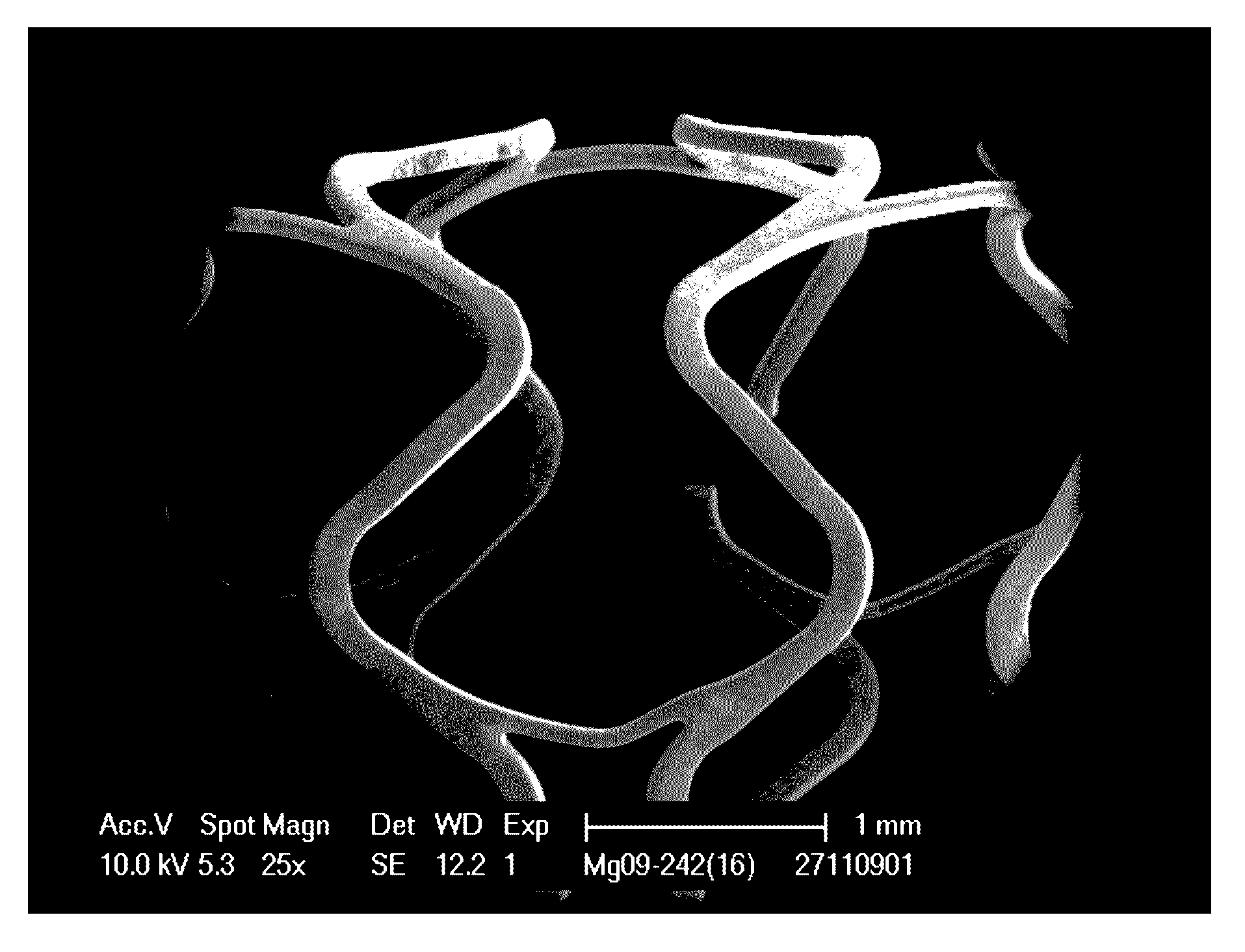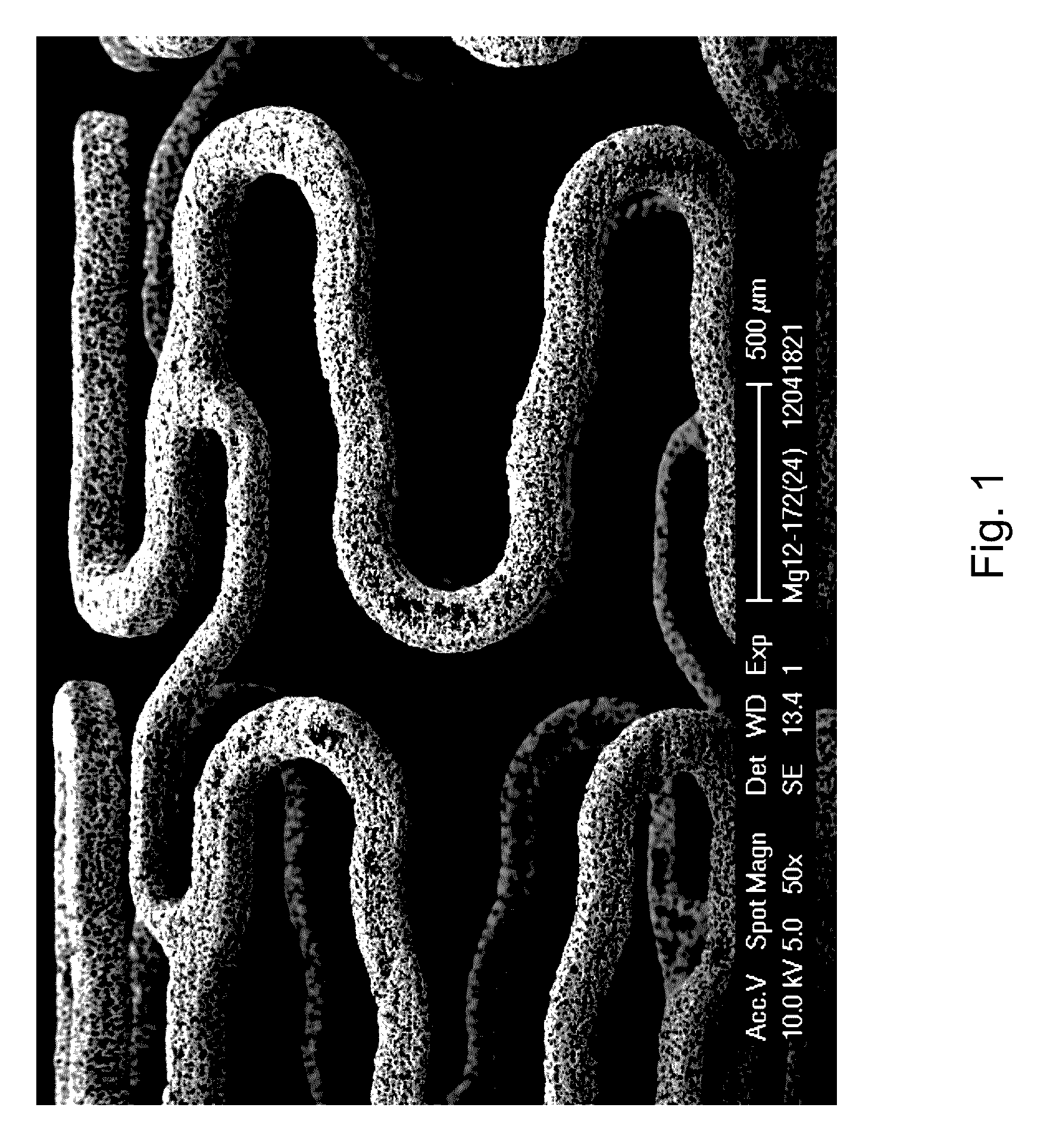Microstructured absorbable implant
a microstructured, absorbable technology, applied in the direction of blood vessels, surgery, pharmaceutical delivery mechanisms, etc., can solve the problems of stent restenosis, corrosion behavior of the implant, tissue changes, etc., to improve the adhesion of polymer, reduce the mechanical properties of the implant or stent, and reduce the effect of stent restrain
- Summary
- Abstract
- Description
- Claims
- Application Information
AI Technical Summary
Problems solved by technology
Method used
Image
Examples
Embodiment Construction
[0040]The invention thus relates to a method for producing a microstructured surface from a bioresorbable magnesium alloy, preferably containing zinc and / or aluminum, characterized in that a surface of a bioresorbable magnesium alloy is treated with a pickling process and an electropolishing process, preferably by a combined pickling and electropolishing process, wherein[0041]a) the surface to be treated comprises or consists of a grain structure having a mean grain size of ≦10 μm, preferably of ≦7 μm, and still more preferably of ≦5 μm, a bioresorbable magnesium alloy, containing magnesium as the major constituent and zinc and / or aluminum as the main alloying elements, preferably containing zinc as the main alloying element; and wherein[0042]b) the magnesium alloy comprises or consists of a composition containing[0043]magnesium in a quantity of 78.0 to 98.99% by weight, preferably 88.5 to 96.9% by weight, still more preferably 91.8 to 95.8% by weight, and most preferably 94.0 to 95...
PUM
| Property | Measurement | Unit |
|---|---|---|
| mean grain size | aaaaa | aaaaa |
| grain size | aaaaa | aaaaa |
| mean grain size | aaaaa | aaaaa |
Abstract
Description
Claims
Application Information
 Login to View More
Login to View More - R&D
- Intellectual Property
- Life Sciences
- Materials
- Tech Scout
- Unparalleled Data Quality
- Higher Quality Content
- 60% Fewer Hallucinations
Browse by: Latest US Patents, China's latest patents, Technical Efficacy Thesaurus, Application Domain, Technology Topic, Popular Technical Reports.
© 2025 PatSnap. All rights reserved.Legal|Privacy policy|Modern Slavery Act Transparency Statement|Sitemap|About US| Contact US: help@patsnap.com



